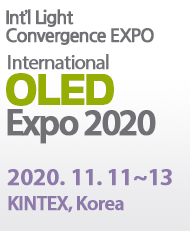The CONx TFE system compreses of Meyer Burger's proprietary remote plasma PECVD for inorganic coating and its PiXDRO inkjet printing technology for the deposition of accurately positioned and homogeneous organic layers. Meyer Burger says that the system provides excellent water and oxygen barrier properties without compromising the optical transparency of the encapsulation layer all the while operating at low temperatures and low ion bombardment.
|
||||||||||||||||||||||























